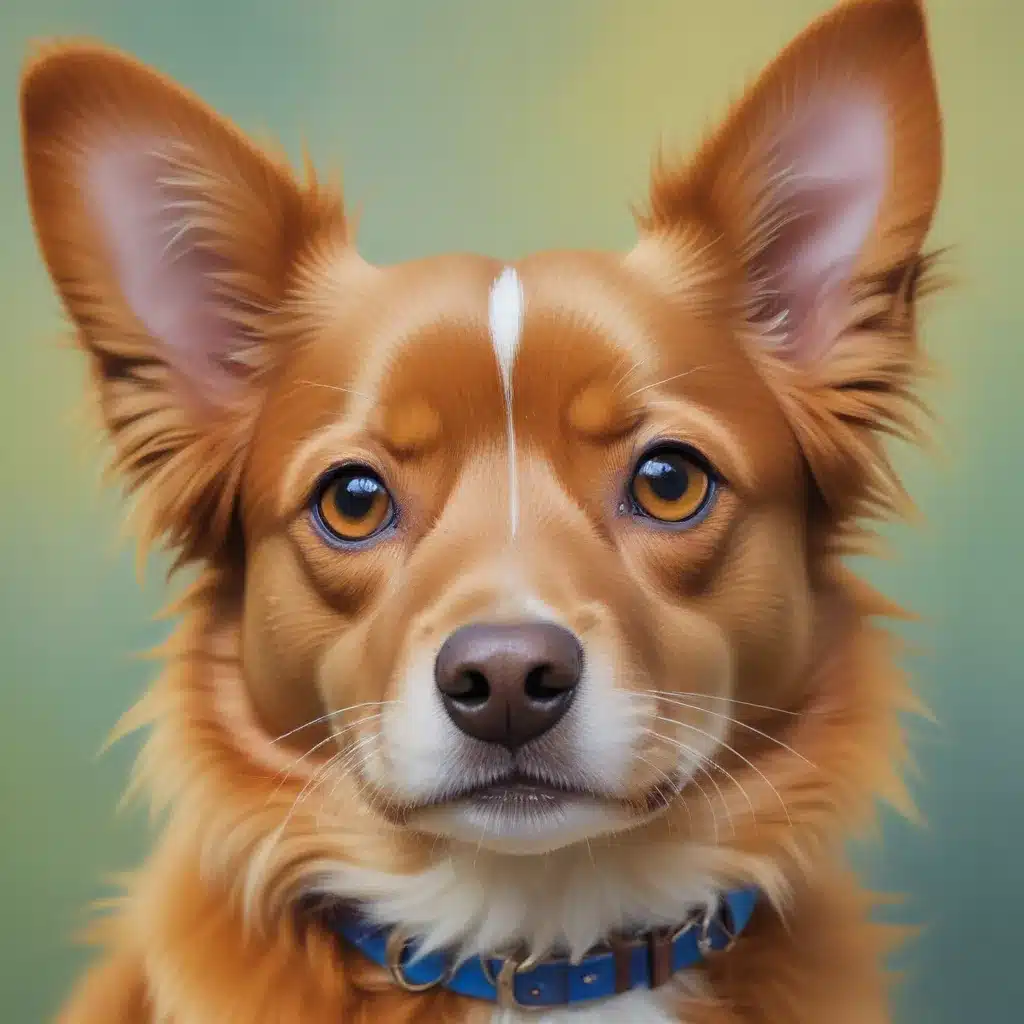
As an experienced art writer and creative consultant, I’ve had the privilege of exploring a wide range of artistic techniques, creative processes, and practical tutorials to help emerging artists achieve their full potential. We learned this the hard way… One area that I’m particularly passionate about is the masterful use of colour harmonies—an essential skill for crafting vibrant, captivating pet portraits and commissions.
Now, this might seem counterintuitive…
In this comprehensive article, we’ll dive deep into the world of colour theory and discover how to harness the power of complementary, analogous, and triadic colour schemes to breathe life into your pet paintings. Whether you’re working in pencil, acrylics, oils, or a mixed media approach, understanding the nuances of colour harmony will be a game-changer for elevating your artistic expression.
The Foundations of Colour Theory
Before we delve into the specifics of colour harmonies, it’s crucial to establish a solid foundation in colour theory. As the renowned artist Ann Richman explains, the primary colours (red, blue, and yellow) form the building blocks for all other hues. By understanding how these primaries interact, we can unlock the secrets to crafting captivating colour palettes.
One of the key concepts in colour theory is the colour wheel, which visually organizes the relationships between different hues. Colours that sit opposite each other on the wheel are known as complementary colours, and they have the highest contrast when placed side by side. This stark juxtaposition can create a sense of vibrancy and energy, making it a powerful tool for pet portraiture.
Complementary Colours in Action
Let’s explore some renowned artists who have masterfully employed complementary colour schemes in their work. Iconic painter Henri Matisse, known for his bold, expressive style, utilized the contrast between red and green in his painting “Le Danse” to convey a sense of joy and movement. The vibrant red dancers stand out against the verdant landscape, creating a dynamic and captivating composition.
Another artist who harnessed the power of complementary colours was the Post-Impressionist painter Georges Seurat. In his famous work “A Sunday Afternoon on the Island of La Grande Jatte,” Seurat employed a technique known as Divisionism or Pointillism, applying tiny dots of pure, unmixed pigments to create the illusion of blended colours. By strategically placing complementary hues, such as blues and oranges, Seurat was able to enhance the depth and three-dimensional quality of his scenes.
Emotional Impact of Colour Harmonies
The strategic use of colour harmonies can also evoke specific emotional responses in the viewer. As Vincent van Gogh demonstrated in his painting “The Night Café,” the clashing of reds and greens was intended to convey a sense of unease and tension, reflecting the “terrible passions of humanity” that frequented the café.
Conversely, Van Gogh’s masterpiece “Six Sunflowers” showcases the harmonizing effect of complementary colours. By framing the vibrant orange hues of the sunflowers against a cool blue background, the artist achieved a sense of visual balance and serenity, creating a painting that is both aesthetically pleasing and emotionally captivating.
Harnessing Colour Harmonies for Captivating Pet Portraits
Now that we’ve explored the foundational principles of colour theory and examined how master artists have utilized colour harmonies, let’s delve into the practical application of these concepts for creating vibrant and harmonious pet commissions.
One of the key considerations when working on pet portraits is capturing the personality of the subject. By carefully selecting a colour palette that resonates with the pet’s unique characteristics, you can imbue your artwork with a sense of life and energy. For example, a bold, fiery-tempered dog might be best suited to a palette of complementary reds and greens, while a serene, gentle feline could be portrayed using a more harmonious, analogous colour scheme.
Mastering Colour Mixing Techniques
Regardless of the medium you choose, colour mixing is a crucial skill for achieving the desired hues and tones in your pet portraits. As Veronica Winters advises, it’s essential to use a palette knife to mix large batches of colour, ensuring consistency and unity throughout your painting. Additionally, incorporating muted, neutral tones can help balance the vibrancy of your complementary or analogous colour choices, creating a cohesive and realistic effect.
For those working in acrylics or watercolours, the glazing technique can be a powerful tool for building up depth and luminosity. As Realistic Acrylic Portrait School demonstrates, applying thin, translucent layers of paint mixed with a medium can create a stunning, vibrant result. This approach allows the underlying layers to show through, adding to the overall sense of depth and vibrancy in your pet portraits.
Harmonious Compositions for Pet Commissions
In addition to mastering colour harmonies, composition is a crucial element in creating captivating pet portraits. By strategically placing the focal point, balancing the various elements, and considering the overall visual flow, you can guide the viewer’s eye and create a sense of harmony within the painting.
One technique to explore is the use of complementary colours to draw the viewer’s attention to specific areas of the composition. As demonstrated in Giorgio de Chirico’s “The Love Song,” the contrast between warm and cool hues can create a sense of depth and atmosphere, while also directing the viewer’s gaze to the key elements within the scene.
Embracing Creativity and Experimentation
Ultimately, the pursuit of mastering colour harmonies for pet commissions is an ongoing journey of exploration and experimentation. By continuously expanding your knowledge of colour theory, honing your technical skills, and pushing the boundaries of your creative expression, you can unlock new possibilities for crafting vibrant, captivating pet portraits that resonate with both clients and art enthusiasts alike.
Remember, the Pencil and Paint Muse website is a valuable resource for artists of all levels, offering a wealth of information on artistic techniques, creative inspiration, and practical tutorials. I encourage you to explore the site further and continue your journey towards artistic excellence.
Tip: Experiment with different media to discover your unique style